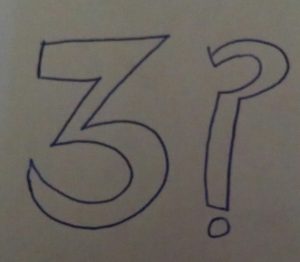Just like there’s rarely actually three brothers who came as stowaways to the Americas, there’s no such thing as the “three sources” rule.
There’s no magic in threes, just like there’s no magic in genealogy.
It really isn’t just about how many sources you have for a specific fact about a person. It’s about how many independently created sources you have. Sometimes different sources for the same piece of information probably are not really all that different.
Let’s say that the death certificate, obituary, and tombstone all provide the same date of birth for a relative. Does that mean I have three sources providing that date of birth? Well technically I do. But when I stop and think about how the date of birth came to be on that death certificate, in that obituary, and on that tombstone, I realize that these sources are not that independent at all. It is very likely that the same person provided the information on all three records. Often our sources are not as independent as we would like for them to be.
If one person didn’t provide the information to all three sources, that date of birth may have been copied from the same original source–perhaps an entry in a family Bible or something the deceased had written somewhere. When a person thinks about how certain information gets in a death certificate, in an obituary, or on a tombstone it often comes from the same place.
In this case, I probably don’t have three truly unique sources for the date of birth of this person.
So even if there is a “rule of three,” which there isn’t, it has not been met.
Often different sources that provide information are not as independent as we think they are or as we would like them to be.
Independently created sources are what we’d like to find. The reality is that most of the time information we find is from different sources is not created independently at all, but rather stems from one person’s memory of an event, one person’s memory of what they’ve been told about an event, or what that person read in a record of the event.
If Grandma is convinced she was born in 1910 in Tioga, Hancock County, Illinois, then that’s what she’s going to put down on every record where she is asked her age or place of birth. She gives that information consistently, not necessarily because it is correct but because she believes it to be true and is attempting to always answer questions based upon what she believes is the truth.
But there may be five different sources for which Grandma directly (by saying it herself) or indirectly (by one of her family members saying what she had told them) provided her date and place of birth. Are those sources really independent?
These are reasons why it’s always good to think about the sources we use, who was the likely informant on them, and how likely they were to know the given information. It’s possible to have several different records and one real source.

One response
I was amazed when I discovered my mom’s real birth town. She’d always named the small town where she lived for nearly her first 12 years as where she was born. But she was actually born in a moderate sized city about two hours away.
I’d like to know whether she really didn’t know or just preferred claiming the little town as her birthplace. She was many years passed when I began my genealogical research…
I was able to confirm her place of birth in the 1920 census and with church announcements as to where the family was living the year she was born and then nearly 2 years later – my grandfather was the minister for both churches.